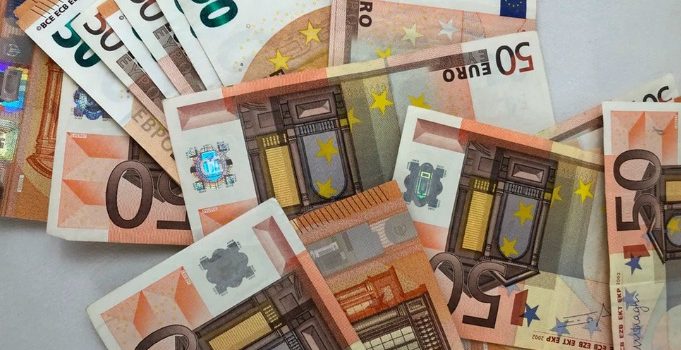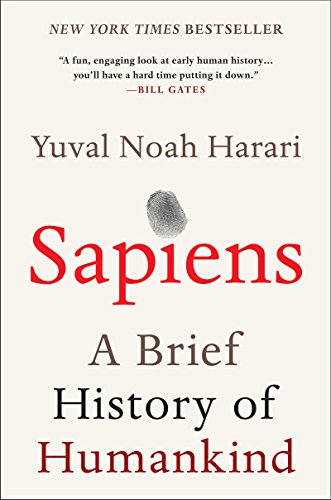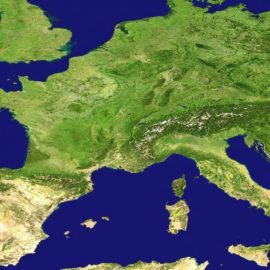

This article is an excerpt from the Shortform summary of "Sapiens: A Brief History of Humankind" by Yuval Noah Harari. Shortform has the world's best summaries of books you should be reading.
Like this article? Sign up for a free trial here .
What were the types of money used throughout history? What were the advantages and disadvantages of these types of currency?
Ancient types of money included cattle, animal skins, grain, salt, beads, and cloth. These have all been used as types of currency in various cultures and time periods.
We’ll cover the major kinds of money throughout history and why a few particular types prevailed.
Types of Currency
While we think of coins and banknotes when we think of money, these are actually rare types of money today. Of the $60 trillion in the world, only $6 trillion of that sum is made up of material currency. Over 90% of all money exists only as electronic data on computer servers.
Inherent v. Noninherent Value
To understand the different kinds of money, we need to understand the concept of monetary value. The first types of money, like barley in Sumer in 3000 BC, had inherent value because it was edible. However, the most common forms of money, the currencies used because for ease of storage and transport, like shells, dollars, and silver, don’t have any inherent worth.
Take the form of money of silver, for example. You can’t eat it. You can’t make clothes or shelter from it. It’s far too soft to be used in tools. What’s it good for? We use it in jewelry, luxury goods that display to others our social status, but it has no value beyond its value as a status symbol. It’s valuable because we all believe it’s valuable.
So, why would anyone trade a bag of rice, something that has inherent value as a source of nutrition, for something as useless as a chunk of soft metal, a shell, or some pieces of green paper? Why do we place so much importance on these types of money?
Because we trust other people value it too. Trust is the foundation of our economic system. You believe that the piece of colored paper that is the dollar bill has value because your neighbor believes it has value. And your neighbor believes it has value because you believe it has value. And you both believe it has value because your government believes it has value and demonstrates this by requiring you to pay your taxes with it.
Bills and coins that bear the identification marks of the kingdom or government, modeled after the first coins made in western Anatolia in 640 BC, give the currency value because they show that an authority can guarantee them. If you trust the king, you can trust the currency with his stamp on it.
The Development of Currency
Many things can be used as types of money. Money only has 2 requirements:
Money is anything that A) systematically represents the value of goods and services, and B) people are willing to use in exchange for goods and services. Money isn’t a material reality. It’s another shared myth that allows us to cooperate with strangers and in large groups.
1. Most types of money can convert almost anything into almost anything else. Unlike with bartering, you can convert even abstract qualities into money. For example, a discharged soldier can exchange his bravery for knowledge when he uses his military benefits to fund his college education.
This is beneficial because, unlike when trying to trade your apples for shoes, you don’t have to worry if the shoemaker will want or need your money. Everyone wants money, and everyone wants it because everyone else wants money. This means that you can exchange money for almost anything.
2. Many types of money allow you to store your wealth conveniently. Some things that are valuable, like time, can’t be stored. Other valuable things, like avocados, go rotten quickly. Early currencies like grain were storable, but they were large and bulky, requiring lots of space, and you had to protect them from mold, rats, and water, among other dangers.
Types of money like coins, paper currency, and computer bits can be stored conveniently and relatively securely.
3. Many types of money are easy to transport. Forms of wealth like grain or real estate can’t be easily transported, so you’re limited in where you can do business. On the other hand, you can carry coins and cowry shells (early and widespread forms of currency) wherever you go. The transition from bartering to money allowed communities to grow and broaden their trade networks.
———End of Preview———

Like what you just read? Read the rest of the world's best summary of "Sapiens" at Shortform . Learn the book's critical concepts in 20 minutes or less .
Here's what you'll find in our full Sapiens summary :
- How Sapiens outlived and outlasted the 8+ other human-like species on Earth
- The 3 critical revolutions in human existence that led to our domination of the planet
- How much of what powers our world today is really just a shared mass delusion
- What the future of humanity might look like






